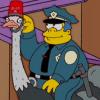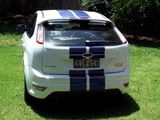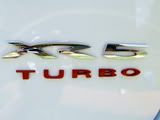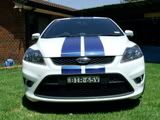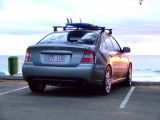In this article, we'll learn how a turbocharger increases the power output of an engine while surviving extreme operating conditions. We'll also learn how wastegates, ceramic turbine blades and ball bearings help turbochargers do their job even better. Turbochargers are a type of forced induction system. They compress the air flowing into the engine (see How Car Engines Work for a description of airflow in a normal engine). The advantage of compressing the air is that it lets the engine squeeze more air into a cylinder, and more air means that more fuel can be added. Therefore, you get more power from each explosion in each cylinder. A turbocharged engine produces more power overall than the same engine without the charging. This can significantly improve the power-to-weight ratio for the engine (see How Horsepower Works for details).
In order to achieve this boost, the turbocharger uses the exhaust flow from the engine to spin a turbine, which in turn spins an air pump. The turbine in the turbocharger spins at speeds of up to 150,000 rotations per minute (rpm) -- that's about 30 times faster than most car engines can go. And since it is hooked up to the exhaust, the temperatures in the turbine are also very high.
The Basics
One of the surest ways to get more power out of an engine is to increase the amount of air and fuel that it can burn. One way to do this is to add cylinders or make the current cylinders bigger. Sometimes these changes may not be feasible -- a turbo can be a simpler, more compact way to add power, especially for an aftermarket accessory.
Turbochargers allow an engine to burn more fuel and air by packing more into the existing cylinders. The typical boost provided by a turbocharger is 6 to 8 pounds per square inch (psi). Since normal atmospheric pressure is 14.7 psi at sea level, you can see that you are getting about 50 percent more air into the engine. Therefore, you would expect to get 50 percent more power. It's not perfectly efficient, so you might get a 30- to 40-percent improvement instead.
One cause of the inefficiency comes from the fact that the power to spin the turbine is not free. Having a turbine in the exhaust flow increases the restriction in the exhaust. This means that on the exhaust stroke, the engine has to push against a higher back-pressure. This subtracts a little bit of power from the cylinders that are firing at the same time.

Turbochargers and Engines
The turbocharger is bolted to the exhaust manifold of the engine. The exhaust from the cylinders spins the turbine, which works like a gas turbine engine. The turbine is connected by a shaft to the compressor, which is located between the air filter and the intake manifold. The compressor pressurizes the air going into the pistons.

The exhaust from the cylinders passes through the turbine blades, causing the turbine to spin. The more exhaust that goes through the blades, the faster they spin.

On the other end of the shaft that the turbine is attached to, the compressor pumps air into the cylinders. The compressor is a type of centrifugal pump -- it draws air in at the center of its blades and flings it outward as it spins.

In order to handle speeds of up to 150,000 rpm, the turbine shaft has to be supported very carefully. Most bearings would explode at speeds like this, so most turbochargers use a fluid bearing. This type of bearing supports the shaft on a thin layer of oil that is constantly pumped around the shaft. This serves two purposes: It cools the shaft and some of the other turbocharger parts, and it allows the shaft to spin without much friction.
There are many tradeoffs involved in designing a turbocharger for an engine. In the next section, we'll look at some of these compromises and see how they affect performance.
Turbocharger Design
One of the main problems with turbochargers is that they do not provide an immediate power boost when you step on the gas. It takes a second for the turbine to get up to speed before boost is produced. This results in a feeling of lag when you step on the gas, and then the car lunges ahead when the turbo gets moving.
One way to decrease turbo lag is to reduce the inertia of the rotating parts, mainly by reducing their weight. This allows the turbine and compressor to accelerate quickly, and start providing boost earlier. One sure way to reduce the inertia of the turbine and compressor is to make the turbocharger smaller. A small turbocharger will provide boost more quickly and at lower engine speeds, but may not be able to provide much boost at higher engine speeds when a really large volume of air is going into the engine. It is also in danger of spinning too quickly at higher engine speeds, when lots of exhaust is passing through the turbine.

A large turbocharger can provide lots of boost at high engine speeds, but may have bad turbo lag because of how long it takes to accelerate its heavier turbine and compressor. Luckily, there are some tricks used to overcome these challenges.
Most automotive turbochargers have a wastegate, which allows the use of a smaller turbocharger to reduce lag while preventing it from spinning too quickly at high engine speeds. The wastegate is a valve that allows the exhaust to bypass the turbine blades. The wastegate senses the boost pressure. If the pressure gets too high, it could be an indicator that the turbine is spinning too quickly, so the wastegate bypasses some of the exhaust around the turbine blades, allowing the blades to slow down.
Some turbochargers use ball bearings instead of fluid bearings to support the turbine shaft. But these are not your regular ball bearings -- they are super-precise bearings made of advanced materials to handle the speeds and temperatures of the turbocharger. They allow the turbine shaft to spin with less friction than the fluid bearings used in most turbochargers. They also allow a slightly smaller, lighter shaft to be used. This helps the turbocharger accelerate more quickly, further reducing turbo lag.
Ceramic turbine blades are lighter than the steel blades used in most turbochargers. Again, this allows the turbine to spin up to speed faster, which reduces turbo lag.
Turbocharger Parts
Some engines use two turbochargers of different sizes. The smaller one spins up to speed very quickly, reducing lag, while the bigger one takes over at higher engine speeds to provide more boost.

When air is compressed, it heats up; and when air heats up, it expands. So some of the pressure increase from a turbocharger is the result of heating the air before it goes into the engine. In order to increase the power of the engine, the goal is to get more air molecules into the cylinder, not necessarily more air pressure.
An intercooler or charge air cooler is an additional component that looks something like a radiator, except air passes through the inside as well as the outside of the intercooler. The intake air passes through sealed passageways inside the cooler, while cooler air from outside is blown across fins by the engine cooling fan.
The intercooler further increases the power of the engine by cooling the pressurized air coming out of the compressor before it goes into the engine. This means that if the turbocharger is operating at a boost of 7 psi, the intercooled system will put in 7 psi of cooler air, which is denser and contains more air molecules than warmer air.
***
Thanks to a few different websites, mostly auto.howstuffworks.com and a few other pics from around the place.
- Alex.





